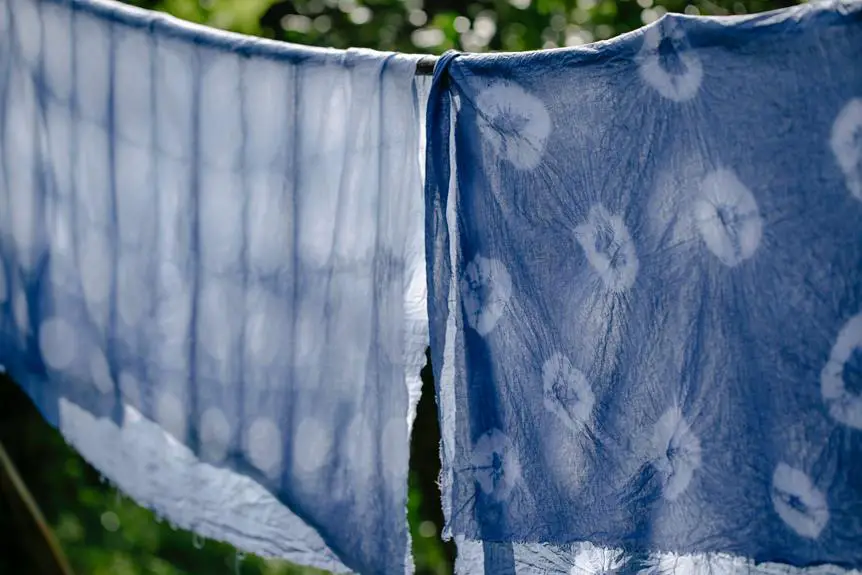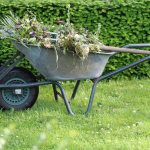Hey there, ready to conquer those pesky weeds in your garden? Choosing the right weed cloth is like finding the perfect armor for your plants. It's all about giving them the best defense against invasive weeds while allowing them to thrive.
With so many options out there, it's essential to know which weed cloth will work best for your garden. From materials to installation and maintenance, mastering the art of weed cloth selection will make a world of difference.
So, let's dive in and explore the ins and outs of finding the perfect weed cloth to keep your garden flourishing.
Key Takeaways
- Weed cloth suppresses weed growth, conserves moisture, regulates soil temperature, and prevents weeds from competing with plants for nutrients and water.
- When choosing weed cloth, consider factors such as durability, permeability, thickness, installation process, and maintenance requirements.
- Pros of using weed cloth include reduced need for frequent weeding, protection against erosion and compaction, and some options made from sustainable materials.
- Cons of using weed cloth include potential hindrance of beneficial insects and organisms, labor-intensive installation, and potential long-term maintenance requirements.
Understanding Weed Cloth: What You Need to Know
When starting your garden, you need to understand the purpose and benefits of weed cloth. This fabric is designed to suppress weed growth, conserve moisture, and regulate soil temperature. By preventing weeds from competing with your plants for nutrients and water, weed cloth can help your garden thrive.
However, it's important to consider the drawbacks of using weed cloth as well. While it effectively suppresses weeds, it can also make it challenging to plant new seeds or bulbs and may require pinning or weighing down to keep it in place.
If you're exploring alternatives to traditional weed cloth, there are options such as biodegradable weed barriers or organic mulches that offer similar benefits without the drawbacks. Some gardeners also prefer using landscape fabric with pre-cut planting holes to maintain weed control while allowing for easier planting.
It's essential to weigh the pros and cons of each method to determine the best fit for your garden. Understanding the benefits and drawbacks of weed cloth, as well as exploring alternative methods, will help you make an informed decision for your gardening needs.
Types of Weed Cloth Materials and Their Features
To select the best weed cloth for your garden, consider the various materials available and their specific features. When it comes to weed cloth materials, there are several options to choose from, each with its own set of features and benefits. Here's what you need to know:
- Durability: Some weed cloth materials, such as polyester or polypropylene, are known for their exceptional durability. They can withstand harsh weather conditions and resist tearing, ensuring long-lasting weed control.
- Permeability: Look for weed cloth that's permeable to water and air. This feature is crucial for maintaining soil health and promoting proper drainage while preventing weed growth.
- Cost Comparison: Consider the cost of different weed cloth materials in relation to their durability and effectiveness. While some materials may be more expensive upfront, they could offer greater long-term value due to their longevity.
When comparing weed cloth materials, it's important to also consider their environmental impact. Some materials may be more eco-friendly than others, so weigh the environmental considerations alongside durability, permeability, and cost to make an informed decision for your garden.
Factors to Consider When Choosing Weed Cloth
Consider the specific requirements of your garden and assess the available options for weed cloth. When choosing the right weed cloth, several factors come into play.
Firstly, consider the durability of the weed cloth. This involves a comparison of different materials such as polypropylene, polyester, and biodegradable options. Polypropylene is known for its strength and resistance to UV rays, making it a durable choice. Polyester, on the other hand, offers excellent tear resistance and is suitable for high-traffic areas. Biodegradable options are environmentally friendly but may have a shorter lifespan.
Secondly, evaluate the permeability of the weed cloth. It's essential to choose a fabric that allows water and nutrients to penetrate the soil while preventing weed growth.
Additionally, consider the thickness of the fabric. A thicker cloth provides better weed control but may impede water and nutrient flow.
Lastly, factor in the installation process and maintenance requirements. Some weed cloths may require professional installation, while others are easy to lay down and maintain.
Pros and Cons of Using Weed Cloth in Your Garden
Before deciding whether to use weed cloth in your garden, weigh the pros and cons to make an informed choice.
Pros:
- Weed cloth durability: Weed cloth can effectively suppress weed growth, reducing the need for frequent weeding and maintenance in your garden. This can save you time and effort, allowing you to focus on other aspects of gardening.
- Soil protection: The use of weed cloth can help protect the soil from erosion and compaction, promoting healthier plant growth and preserving the integrity of your garden beds.
- Weed cloth sustainability: Some weed cloths are made from sustainable materials, offering an environmentally friendly option for weed control in your garden.
Cons:
- Restriction of beneficial organisms: Weed cloth may hinder the movement and activities of beneficial insects and organisms in the soil, potentially impacting the overall ecological balance of your garden.
- Installation challenges: Installing weed cloth can be labor-intensive, especially in areas with irregular shapes or obstacles such as existing plants or shrubs.
- Long-term maintenance: Over time, weed cloth may degrade or become less effective, requiring replacement or additional maintenance to uphold its weed-suppressing properties.
Consider these factors when deciding whether to incorporate weed cloth into your garden to ensure it aligns with your gardening goals and values.
How to Install Weed Cloth Effectively
When installing weed cloth effectively, ensure that you have the necessary tools and materials for the job. Here's a handy checklist to help you get started:
| Tools | Materials |
|---|---|
| Garden rake | Weed cloth |
| Scissors | Landscape fabric pins |
| Shovel | Mulch or gravel |
| Measuring tape | |
| Wheelbarrow |
Now, let's talk about effective installation. First, clear the area of any debris, rocks, or weeds. Next, measure and cut the weed cloth to fit the space, leaving some extra fabric to overlap at the seams. Secure the cloth in place with landscape fabric pins, spacing them out every few feet. Finally, cover the weed cloth with a layer of mulch or gravel for added protection and aesthetics.
To ensure an effective installation, avoid common mistakes such as leaving gaps or not securing the cloth properly, as these can lead to weed growth and reduce the cloth's effectiveness. By following these tips, you can install weed cloth effectively and enjoy a weed-free garden for seasons to come.
Maintaining and Caring for Weed Cloth
So, you've got your weed cloth all set up in your garden, but how do you make sure it stays in top shape?
Let's talk about the lifespan of weed cloth and the proper techniques for maintaining it.
We'll cover everything from installation to long-term care to keep your garden looking its best.
Weed Cloth Lifespan
To extend the lifespan of your weed cloth, regularly inspect for tears or fraying along the edges and promptly repair any damage to prevent further deterioration. Proper care and maintenance can significantly impact weed cloth durability, preventing weed cloth degradation and ensuring its longevity.
Here's what you can do to maintain and care for your weed cloth:
- Regular Inspections: Keep an eye out for tears, fraying, or damage caused by external factors.
- Prompt Repairs: Act quickly to mend any tears or fraying to prevent them from worsening.
- Proper Storage: Store your weed cloth properly when not in use to protect it from environmental damage and prolong its lifespan.
Proper Installation Techniques
Inspect your weed cloth for tears, fraying, or damage caused by external factors before beginning the installation process to ensure its effectiveness and longevity in your garden.
Proper anchoring is crucial to prevent the cloth from shifting and exposing the soil to weeds. Use landscape staples or fabric pins to secure the cloth in place, especially along the edges and seams. Make sure to overlap the seams by at least 6 inches to prevent weed penetration.
Additionally, ensure that the cloth is taut and free of wrinkles to maximize moisture retention and prevent weed growth.
When cutting or trimming the cloth to fit the desired area, use sharp scissors or a utility knife to prevent fraying and maintain its integrity.
Following these installation techniques will help you get the most out of your weed cloth and keep your garden weed-free.
Weed Cloth Maintenance
Ensuring proper maintenance of your weed cloth is essential to prolong its effectiveness and keep your garden free from unwanted weeds. To maintain your weed cloth effectively, consider the following:
- Regular Cleaning: Regularly remove debris such as leaves and dirt from the surface of the weed cloth to prevent clogging and ensure optimal water and nutrient flow to your plants.
- Weed Cloth Durability: Inspect the weed cloth for any signs of wear and tear, and promptly repair or replace any damaged areas to maintain its durability and effectiveness.
- Proper Storage: When not in use, store the weed cloth in a dry, protected area to prevent damage from weather or pests, prolonging its lifespan.
Emotional trigger: Protect your garden investment and take pride in a well-maintained, weed-free space.
- Emotional trigger: Ensure peace of mind knowing your garden is safeguarded against invasive weeds.
- Emotional trigger: Preserve your investment and ensure long-lasting weed control.
Weed Cloth Vs. Other Weed Control Methods
When it comes to keeping your garden free of weeds, you've got options. Weed cloth is great at preventing weed growth, but it's not the only method out there.
You'll want to consider factors like effectiveness, cost compared to mulch, and the environmental impact of each method.
Let's break it down so you can make the best choice for your garden.
Weed Cloth Effectiveness
When considering weed cloth effectiveness in comparison to other weed control methods, you'll find that the cloth offers several distinct advantages.
- Durability: Weed cloth is highly durable, providing long-lasting weed control without the need for frequent replacement. This can save you time and money in the long run, as it requires less maintenance compared to other methods.
- Permeability: Unlike solid barriers, weed cloth allows air, water, and nutrients to penetrate the soil, promoting healthy plant growth while effectively suppressing weed growth. This balance is crucial for maintaining a thriving garden while minimizing weed intrusion.
- Ease of Use: Weed cloth is easy to install and requires minimal effort to maintain, making it a convenient option for gardeners seeking a low-maintenance weed control solution.
Weed cloth's durability and permeability make it a highly effective choice for maintaining a healthy garden with minimal effort.
Cost Comparison With Mulch
To maximize cost-effectiveness, compare weed cloth expenses with those of alternative weed control methods. While weed cloth may have a higher upfront cost, it can provide long-term savings compared to mulch alternatives.
Organic mulches such as wood chips or straw require regular replenishment, incurring ongoing expenses. Additionally, these mulches may break down over time, necessitating replacement and potentially leading to increased weed growth.
In contrast, weed cloth offers a durable and long-lasting weed control solution, reducing the frequency of maintenance and replacement. Consider the environmental impact as well; weed cloth can help conserve water and reduce the need for herbicides.
When installing weed cloth, ensure proper coverage and use of securing pins to maximize its effectiveness and longevity, ultimately contributing to cost savings in the long run.
Environmental Impact Comparison
You should consider the environmental impact of weed cloth compared to other weed control methods. When evaluating the sustainability of weed cloth and other alternatives, it's important to keep in mind the long-term effects on the environment. Here's a breakdown to help you understand the environmental impact:
- Weed Cloth:
- Non-biodegradable material may contribute to landfill waste.
- Production process may involve chemicals harmful to the environment.
- Can prevent natural decomposition of organic matter in the soil.
As you weigh your options, remember to consider sustainable alternatives that align with your environmental values. Making an informed choice won't only benefit your garden but also contribute to the well-being of the planet.
Tips for Selecting the Best Weed Cloth for Your Garden
Selecting the best weed cloth for your garden requires careful consideration of its durability, permeability, and suitability for your specific gardening needs. When it comes to durability and cost-effectiveness, it's essential to invest in a weed cloth that can withstand the elements and the wear and tear of gardening activities. Look for a cloth made from high-quality materials that offer long-term protection against weeds without easily tearing or degrading.
In terms of permeability and water retention, opt for a weed cloth that allows water and nutrients to reach the soil while preventing weed growth. A good weed cloth should strike a balance between blocking out sunlight to inhibit weed growth and allowing essential moisture and nutrients to penetrate the soil for the healthy growth of your plants.
Consider the specific requirements of your garden, such as the types of plants you're growing, the climate in your area, and the level of maintenance you can provide. By taking these factors into account, you can select a weed cloth that aligns with your garden's unique needs and ensures the best possible growing conditions for your plants.
Frequently Asked Questions
Does Weed Cloth Work Effectively in All Types of Soil and Climates?
Weed cloth can be effective in various climates and soil types. It helps control weed growth and conserves moisture. Choose a fabric with good permeability for better results. Consider the specific needs of your garden when selecting weed cloth.
Are There Any Specific Plants or Vegetables That Should Not Be Grown With Weed Cloth?
When using weed cloth in your garden, it's important to consider the specific plants and vegetables you're growing. Some may not thrive as well with weed cloth due to differences in gardening methods and environmental concerns.
Can Weed Cloth Be Used in Combination With Organic Gardening Methods?
Yes, weed cloth can be used in combination with organic gardening methods. It helps reduce weed growth and conserves moisture, but drawbacks include restricted air and water flow. Consider alternative solutions to minimize environmental impact.
What Is the Expected Lifespan of Weed Cloth, and How Often Should It Be Replaced?
Weed cloth lifespan varies depending on quality, usage, and climate. Generally, it lasts 2-5 years and should be replaced as it degrades. Consider soil, climate, and plant needs when choosing, and be aware of potential environmental impact and drawbacks.
Are There Any Potential Environmental Concerns or Drawbacks Associated With Using Weed Cloth in the Garden?
When using weed cloth in your garden, it's important to consider the potential environmental impact. While it can help with weed control, some drawbacks include reduced soil aeration and water penetration. Consider alternative solutions for a more eco-friendly approach.
- Width of Velvet Fabric: Standard Bolts & Custom Ordering Information - June 22, 2025
- Buying Velvet Fabric Online: Trusted Sources & Quality Assessment Tips - June 22, 2025
- What Is Devoré Velvet? Burnout Technique, Patterns & Aesthetic - June 22, 2025







